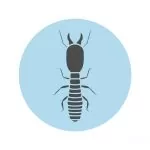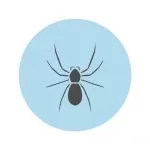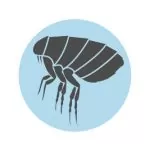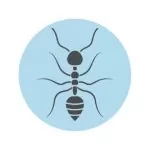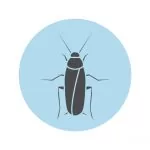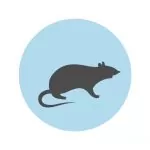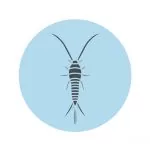Signs of termites in your home

No Smell No Mess

All Year Round Protection

100% Safe Cuaranteed Results

- Rated 5.0 Stars

Proud Member of Australian Environmental Pest Control Sydney Association
Termites are one of the most common pest problems we face in Sydney, but with so much information out there, much of it inaccurate, it can be difficult to know exactly what termite pest control measures you should be using. For the termite protection Sydney residents deserve, we think it’s time to set the record straight, and here are termite FAQs or the questions we know you want answers to.
The first step to getting the termite treatment Sydney homes and offices need is to recognise when you have a problem to begin with, and there are seven different signs to look for.
- Clicking sounds from your walls – This can be caused by the termite soldiers banging their heads to signal danger to the rest of the colony if it is disturbed.
- Mud Tubes – Designed to protect termites from predators, the mud tubes start at the ground, and often cross barriers the termites encounter, such as metal capping or pipework, Brown in colour and with a soil like texture, they range from small exploratory tubes of around 10mm in diameter, up to 50mm diameter colony tubes that can contain huge numbers or worker termites.
- Tree Blowholes – Subterranean Termites often build their colonies within trees, and evidence of this can be seen where holes are sealed up by the workers, with the tree producing a callus in response to the injury.
- Subterranean Tunnels – There are several subterranean species of termite, and they create tunnels as the move through the soil searching for food. They can extend as far as 50m from the colony, and they are found within the first 20cm of soil depth.
- Hollow sounding timber – Termites consume wood from the inside out, and although they are hard to see from the outside, knocking on the wood will give a hollow sound that shows their presence inside.
- Earthen Packing – Although they work within the wood to consume it, they produce a mud like earthen packing that can be seen on the surface in some areas, particularly foundation walls.
- Termite Droppings (Frass) – In any termite inspection Sydney pest control experts will be looking for termite droppings. It is a particular sign of dry wood termites, and manifests as small black marks with a dark powdery substance all around them.
What causes termite infestation?
Termites are not unique to Australia, but Australian homes are particularly vulnerable to infestation for several reasons. The first is urbanization, which puts pressure on termite colonies to find new food sources as their habitat is destroyed. Our homes represent an attractive option full of the wood they consume, and because 85% of Australian homes use a timber frame construction, it is clear why they are so attracted.
How much does it cost to treat a house for termites?
As you can imagine, the cost varies depending on the size of the house and just how bad the infestation actually is. There are four main approaches to termite control Sydney professionals use, and the cost:
- Termite Repellent – This costs between $200 and $500, and it is the cheapest option for controlling an ongoing infestation. Applied directly to the colony, it will not necessarily move the whole colony and might be just a short-term solution.
- Termite Poison – This costs between $400 and $700, and uses complex, delayed-action poisons ensuring that sprayed termites take it back to the nest, making this a very effective approach.
- Termite Baiting – An ongoing service, termite baiting aims to be a cure and a prevention solution all in one. It involves baiting every few weeks, and costs between $2,500 and $3,500 per year.
- Termite Barriers – A complete trenching system around the home used in combination with poison or repellent, a comprehensive solution that lasts for around 8 years. A one of cost of $2,000 to $4,500 per treatment.
How much does a termite inspection cost?
To get a full termite inspection, Sydney professionals will charge between $240- $290, this includes a full visual structural inspection and a complete inspection report providing all the information you need.
What attracts termites into your home?
As we have said, the sheer amount of wood in houses is why termites stay once they get into our homes, but there are things you may be doing that attract them to your particular house.
- Firewood and other woodpiles – If you keep firewood or other stacks of wood around your home, it can attract termites, and be the entry point into your home itself.
- Blocked Guttering – Termites love moisture, so if you don’t clean your gutters, you can find that water pooling due to blockages will attract termites to your home.
- Mulch – Both food and full of moisture, Mulch is heaven for termites, and can attract a colony to your home. Keep it away from the home foundations if you use it, and also try to avoid wood mulch as much as possible.
Is termite damage covered by insurance?
In general, Australian home insurance will not cover damage caused by termites or any other infestation.
How long does it take to treat a house for termite infestation?
This really depends on the treatment chosen, but for effective termite treatment, Sydney homeowners can expect the whole process to take from a couple of weeks to several months for the treatment to penetrate the entire colony.
How do you inspect a house for termites?
In an effective termite inspection, Sydney pest controllers will look for various signs of termite activity, high moisture reading inside walls, mud tubes and other established behavioural activity. This is accomplished with a detailed structural examination of the property, taking in all aspects of the building itself along with nearby trees and soil to establish the presence of a colony or scouts. If you do see any sign of termites it is crucial you do not disturb them, and instead contact professional termite pest control.
What is the best treatment for termites?
Whether termite baiting or barriers are best for your situation will depend on the location and construction of the home. Baiting is highly successful in dealing with existing infestations, however the barrier approach can help prevent an infestation in the first place, or it can make it very easy to spot in the early stages.
What is the best way to prevent termites?
A termite barrier is the best approach to prevent termite issues, however, they are not a complete solution on their own. While barriers can make it extremely difficult for termites to enter your home, nothing can prevent them completely, which is why a barrier is designed to also make it very clear when a colony is attempting to infest the building. What that does mean though, is that regular termite pest control inspections are needed as part of the prevention solution.
How much will it cost to repair termite damage?
That depends on how extensive the damage is, however according to surveys, the average cost sits somewhere between $5,000 and $10,000, although severe cases can result in much, much higher costs to restore the home, and in the worst cases, the house can be completely destroyed.
Do termites go from house to house?
Termites are always looking for food, and so if there are termites nearby, such as in a neighbor’s home, then you are at greater risk of an infestation yourself.
Where did the termites come from?
In general, termite colonies begin to move into residential areas as their natural habitat is consumed. In many cases, new homes are built near to existing termite presence, and that is how they make their way into our homes.
Why are termites important?
There are over 300 species of termite in Australia, and while they have a well-earned reputation for destruction, only a handful of those species are a problem for our homes. The termite control Sydney homeowners need is most often to deal with the Coptotermes species, which can devastate a home in just a few months if not caught. However, while that makes it important to spot such infestations earlier, other termite species that do not affect our homes are in fact an important part of the Australian ecosystem, and are excellent recyclers, eating dead plant material. Termites are also mostly responsible for the topsoil that is so good for our food crops.
How Many Termites are in a colony?
Termite queens can lay 2000 eggs per day, so as you can imagine, that makes for a fast-growing colony. In fact, termite colonies in urban environments can remain undetected for a long time, and contain as many as a million termites.

